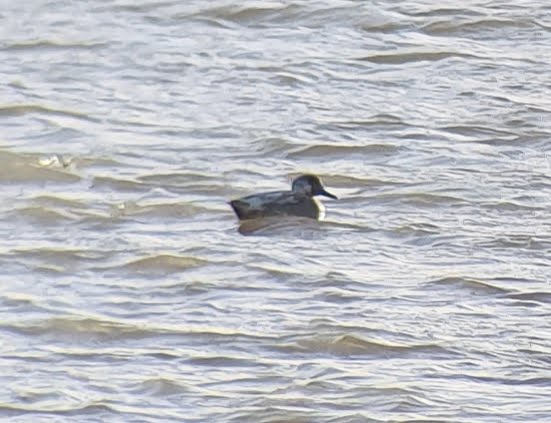Wetland Bird Surveys
It was a weekend of wetland bird surveying for the BTO’s
nation-wide WeBS monitoring scheme. On Saturday I was completing the WeBS in
Chichester Harbour. The area covered was between Itchenor and Dell Quay. The
count started in Itchenor. The tide was rising, and at a wader roost site the
amount of available land was decreasing. As we counted, more and more waders
continued to fly in and pile into the ever-diminishing area of land. What
originally started out as just 13 visible redshanks and 20 grey plovers ended
up being over 200 redshanks and 400 dunlins in addition to the grey plover! One
of the grey plovers was in full, spectacular, summer plumage. Unusual for
December!
North of Chichester Marina a great northern diver was
working its way up the channel close to the near bank. For the brief periods
between its dives we had fantastic views of this large loon. Great northern
divers typically have large square-ish heads, this one was no exception and had
a ginormous cube between its chunky bill and neck.
On Sunday it was WeBS at RSPB Medmerry. As has often been
the case recently it was rather blowy. The wind was gusting around 40 miles per
hour. This is not ideal condition for counting birds or anything else for that
matter…
The most notable count from the day was that of the teal.
They didn’t reach the totals attained last year when there were over 2,000 on
the site, but numbers were still reasonable with around 1,000 birds seen. As I
was counting through a flock of 450 teal a strikingly pale individual caught my
attention. Around half of its face was white and there was a significant amount
of white running down the back and sides. But it was a teal, it just had
abnormal areas of plumage.
 |
| Distant picture of unusual teal at Medmerry. |
There are several different causes of white feathering in
birds. The most well known would be albinism, this is caused by a genetic mutation
that halts the production of melanin. Melanin pigments are dark, so a
systematic reduction in melanin synthesis causes albino birds to be entirely paler
than non-albino. Another cause of abnormal colouration is leucism. Leucism is
resultant from developmental defects in pigment-producing cells; it does not
necessarily cause a system-wide reduction in pigment. The resulting effect
therefore can vary from small patchy areas of abnormal colouration to something
so widespread that it could resemble albinism. This teal appeared to fit the
criteria for being leucistic however there are many other potential causes,
nothing is cut and dry when it comes to biology!
Common snipe were recorded on both days in low numbers, at
Medmerry just one was seen. Contrast this with just over a week prior when a
farmland bird survey at the same site revealed 6 jack snipe and 107 common
snipe. The methodology for the farmland survey verses the WeBS is quite
different, and this is the reason for the disparity in the numbers (rather than
almost all the snipe having disappeared in
the meantime!). It is difficult to know the true number of individuals of
camouflaged and reclusive species such as snipe, and a WeBS count will almost
always undercount these birds. With a monitoring scheme such as WeBS some
important pieces of information are to be found in the trends. From this
perspective being consistent with the recording, more so than being 100%
accurate, is the aim.
- Hugh Baggaley



Comments
Post a Comment